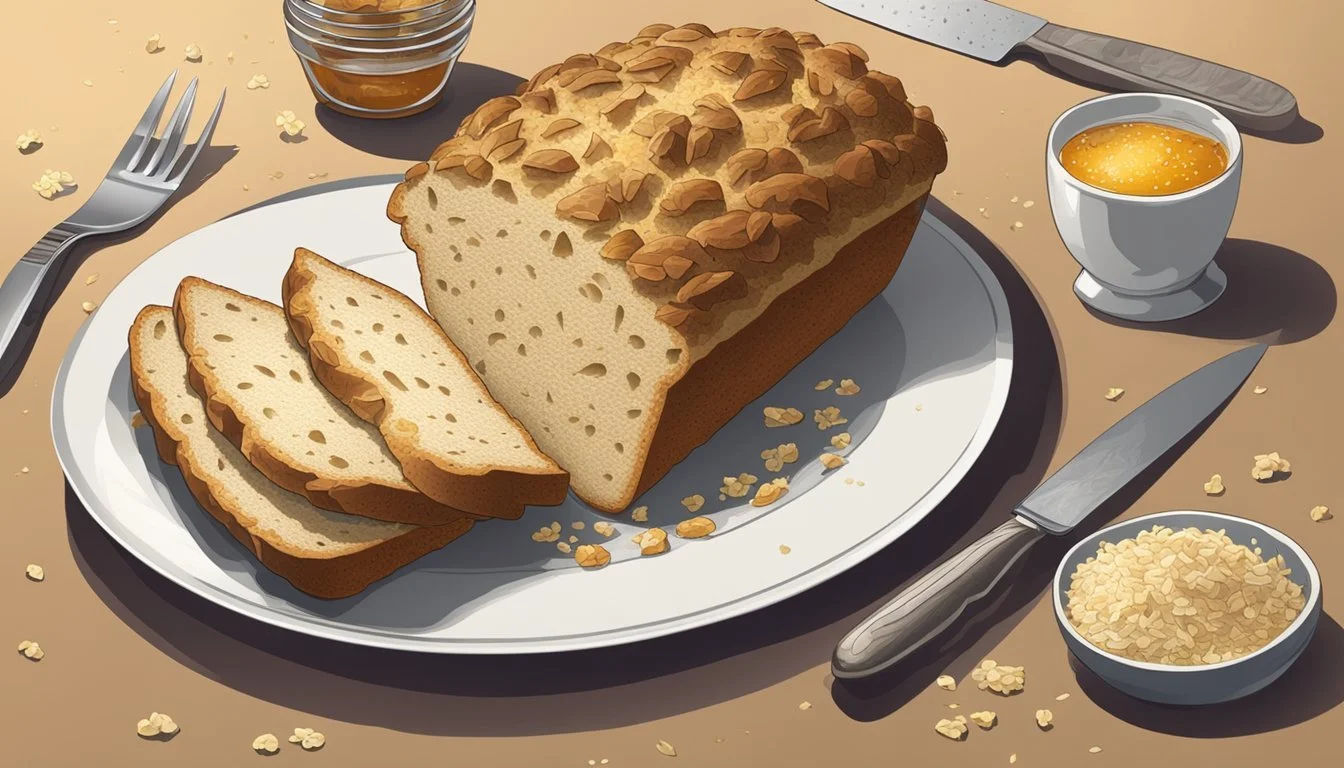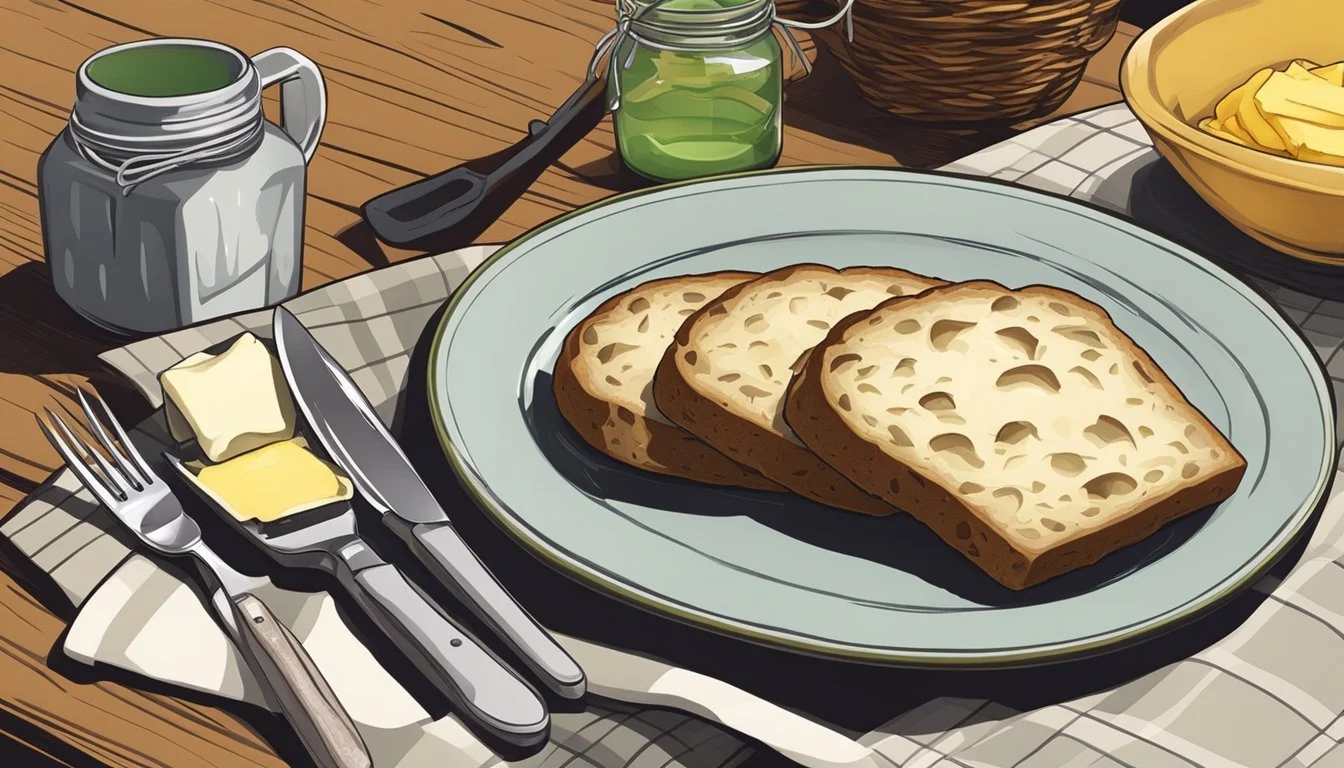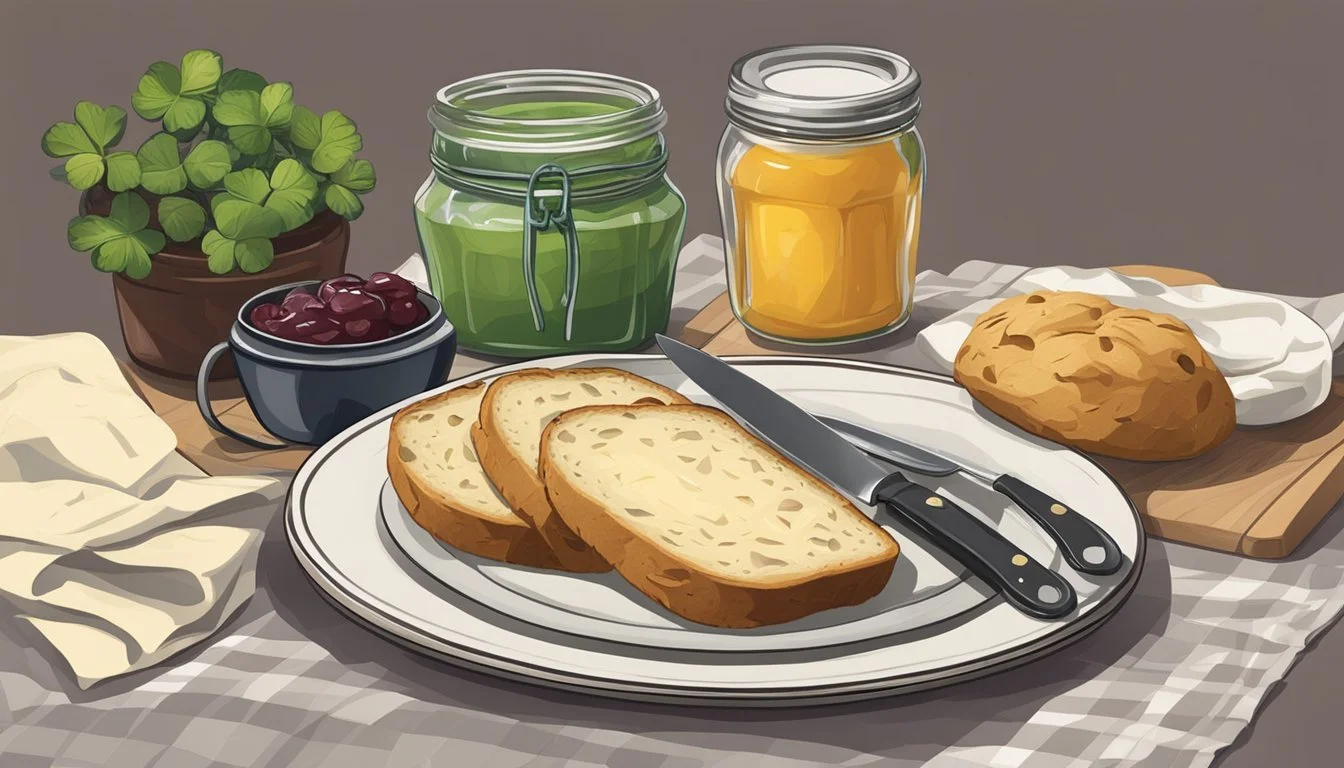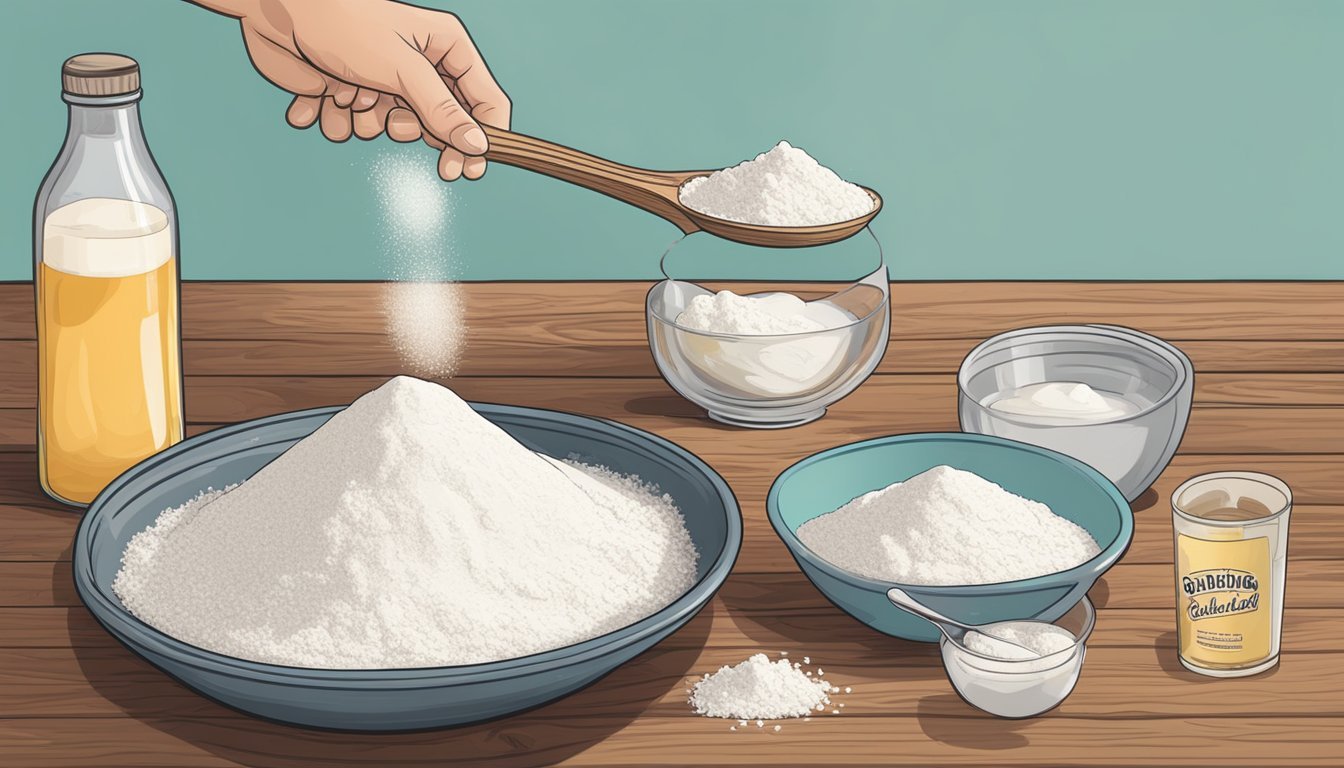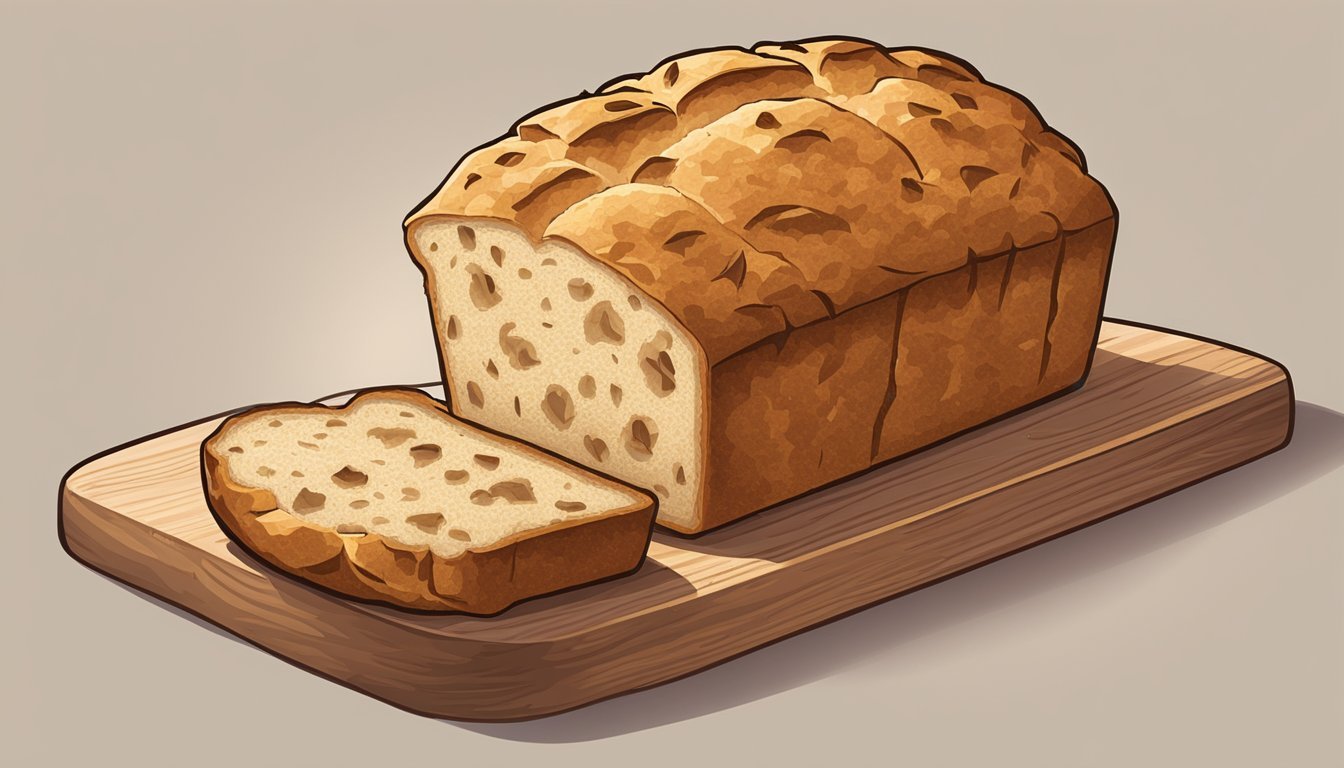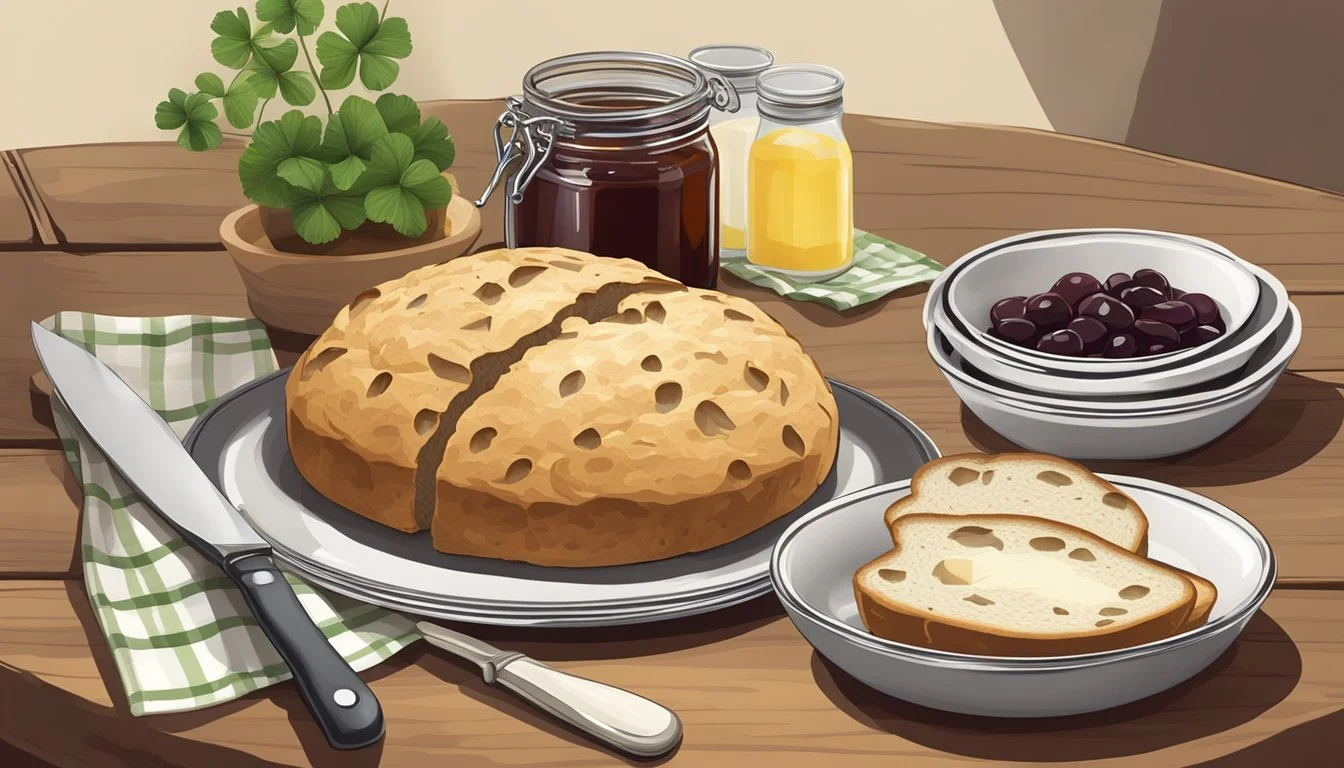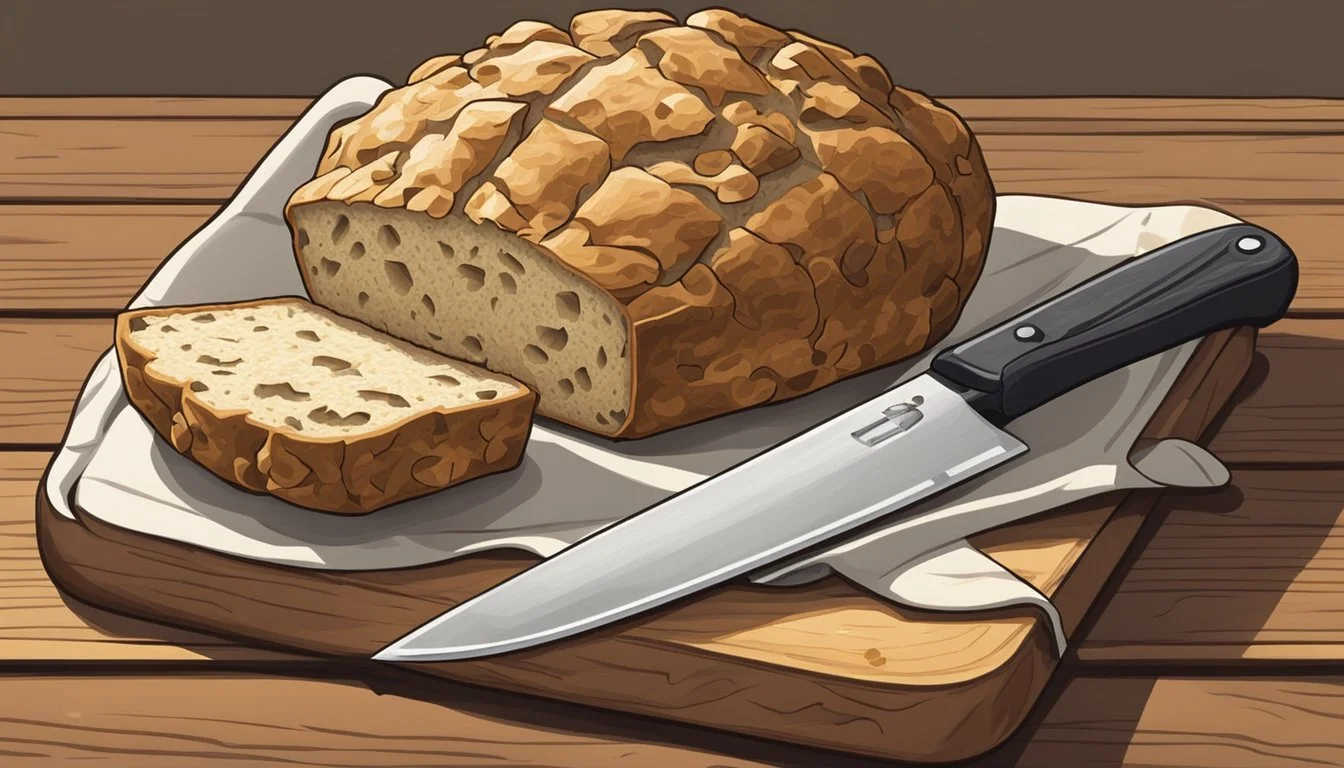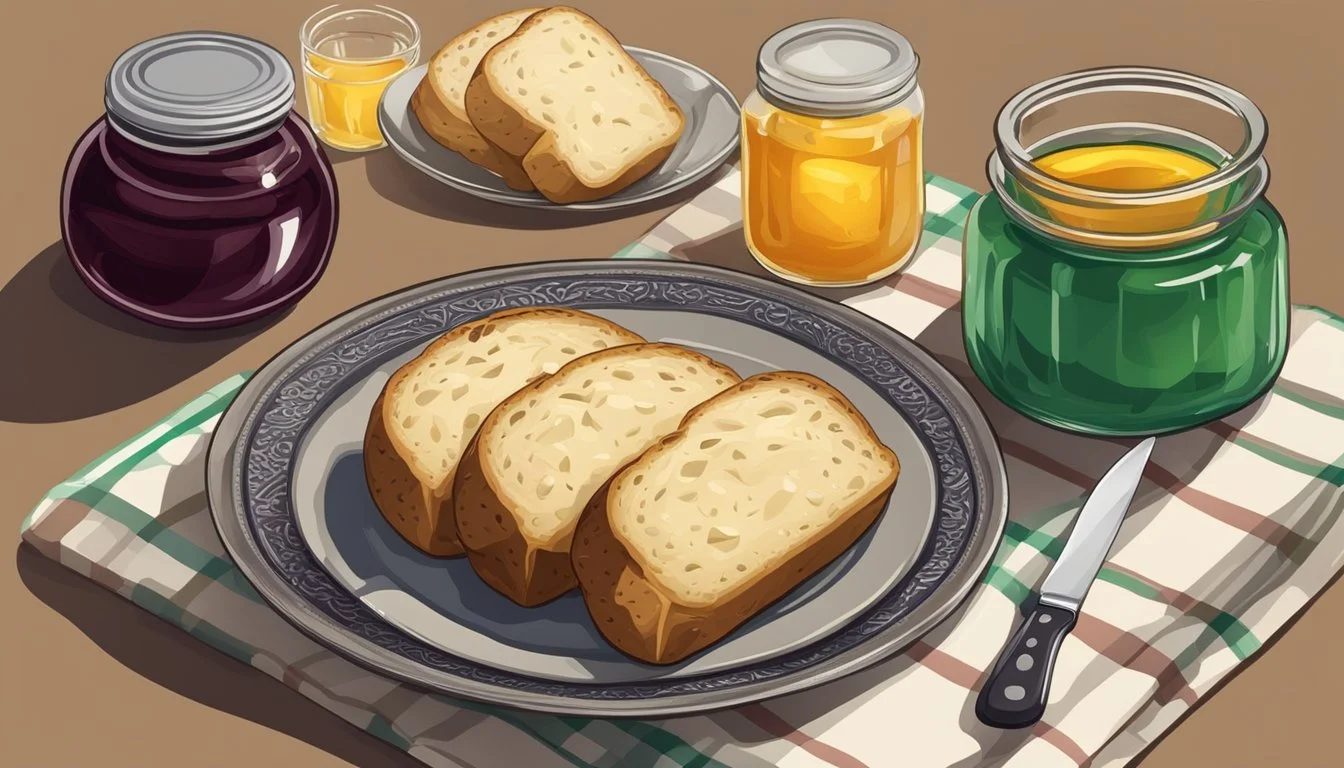How do you eat Irish soda bread?
Best Practices for Enjoyment and Flavor
Irish soda bread (What wine goes well with bread?) is a traditional staple in Irish cuisine, recognized for its distinctive baking process that relies on baking soda as a leavening agent instead of yeast. The bread’s texture is dense and the flavor slightly tangy, typically featuring a combination of flour, baking soda, salt, and buttermilk. This bread is often enjoyed fresh from the oven, where its exterior crust provides a pleasant contrast to the soft, warm interior.
There are various ways to serve and enjoy Irish soda bread, making it a versatile addition to many meals. It can be served plain, allowing its subtle flavors to shine, or it can be paired with a range of toppings such as butter, jams, or cheeses. The richness of Irish butter, in particular, complements the bread's texture and taste. When eaten fresh, the warmth of the bread enhances the spread's meltiness, resulting in a comforting and hearty eating experience.
As the bread is characteristically dense, it's also well suited to being dipped in stews and soups, absorbing the flavors while maintaining its structure. Whether for breakfast, lunch, or dinner, Irish soda bread offers a simple yet satisfying option that anchors an authentic Irish meal or introduces an international twist to the table.
History and Origins
Irish soda bread, a quintessential component of Ireland's culinary history, emerged out of both necessity and tradition. It signifies a convergence where simplicity met innovation in Irish kitchens.
Traditional Irish Soda Bread
Irish soda bread's simple recipe and connection to St. Patrick's Day festivities stem from its origins in the 1830s. Ingredients typically include:
Soft wheat flour
Baking soda (replacing yeast)
Salt
Sour milk or buttermilk (for rising)
The bread’s creation coincides with the introduction of bicarbonate soda to the U.K. and Ireland. Economic conditions often made traditional ingredients for breadmaking unaffordable, leading to the ingenious use of baking soda and sour milk as affordable alternatives. The simplicity of its recipe appealed to many and was a practical solution to Ireland’s food scarcity issues at that time.
Irish American Influence
In the United States, the history of Irish soda bread morphed with the influence of Irish American immigrants. Over time, the recipe adapted, often including:
Raisins
Caraway seeds
These ingredients were not commonly found in the traditional Irish soda bread but have been adopted by many to celebrate their heritage, especially around St. Patrick's Day. The addition of such ingredients, while not authentic to the original recipe, reflects the blending of cultures and the adaptive nature of traditional foods in new homelands.
Key Ingredients
Irish soda bread, a traditional staple, is cherished for its simplicity and rustic charm, which is predominantly the result of its key ingredients working in concert.
Primary Ingredients
The foundation of traditional Irish soda bread is remarkably straightforward. It consists of:
Flour: Usually whole wheat or all-purpose flour, providing the base and structure.
Buttermilk: Not only adds a subtle tanginess but also reacts with baking soda to help the bread rise.
Baking Soda: Serves as a leavening agent, a substitute for yeast, in the bread.
Salt: Enhances flavor and regulates yeast action.
These ingredients combine to create a dense, hearty bread with a distinctive crust and tender crumb.
Additional Variations
Irish soda bread variations can include a mix of delightful additions to suit different tastes:
Seeds: Such as caraway seeds, which introduce a unique aroma and flavor.
Dried Fruit: Raisins, currants, or other dried fruits are often added for sweetness.
Nuts: Occasionally nuts may be folded into the dough for an added crunch.
Oats: Sprinkling oats on top or mixing into the dough for texture.
Sugar: Some recipes add granulated sugar for a touch of sweetness.
Butter: Unsalted butter can be included in the dough or used to slather on the warm bread.
These variations allow for a range of flavors and textures, creating numerous possibilities for enjoying Irish soda bread. However, it's important to note that the addition of some ingredients, such as butter or sugar, may stray from the simplest and most traditional version of the bread.
Tools and Equipment
In preparing Irish soda bread, the cook's success is greatly enhanced by the correct use of specific tools and equipment that ensure the bread is baked evenly and has the proper texture.
Baking Essentials
A cast-iron skillet or a Dutch oven is highly recommended for baking Irish soda bread. These utensils provide even heat distribution and can withstand the high temperatures required for baking the perfect loaf. Using parchment paper can prevent the bread from sticking to the skillet or oven, and it also facilitates easy cleanup.
When mixing the dough, a wooden spoon proves invaluable for its sturdy build, which is ideal for combining the dry and wet ingredients without overworking the dough. After mixing, the dough should be turned out onto a flat surface for kneading—this is where a sharp knife comes into play both for dividing the dough if necessary and for scoring the top before it is baked.
Once the bread is ready to be placed in the oven, it should be transferred using a spatula to help maintain its shape. During baking, it's pivotal to monitor the temperature, so a reliable oven is crucial for an even bake and a delicious, crusty finish.
Finally, once baked, Irish soda bread should be cooled on a wire rack to prevent it from becoming soggy due to trapped moisture. If the bread is not to be served immediately, plastic wrap can be used to keep it fresh without it losing its texture.
By ensuring these tools and equipment are at hand, one can achieve the characteristic texture and flavor that Irish soda bread is celebrated for.
Preparing the Dough
When making Irish soda bread, the two critical steps in preparing the dough are mixing the ingredients and shaping the dough. Precision in these steps is key to achieving the desired texture and flavor of the bread.
Mixing the Ingredients
The baker begins by whisking the dry ingredients to ensure an even distribution. This typically includes a flour mixture of both white and wholemeal flours, salt, and baking soda. The recipe might call for other components such as a sweetener or additional leaveners. Once the dry base is ready, the baker adds fats like butter, rubbing it in until the flour resembles coarse breadcrumbs.
In a separate container, the wet ingredients—commonly buttermilk and sometimes an egg—are whisked together. The liquid is then poured into the flour mixture. The mixture is stirred gently until it just comes together, forming a shaggy, somewhat sticky mass. The key is to minimize the amount of mixing to prevent activating the gluten too much, which would make the bread tough.
Shaping the Dough
This is a delicate process that should not overwork the dough. Flouring the working surface, the baker turns out the shaggy dough and shapes it into a round. There is no need to knead the dough extensively—Irish soda bread requires a light touch. Shaping is often just a gentle folding and tucking process to form a round loaf, ensuring the dough remains airy and light.
Once into shape, the baker transfers it to a baking sheet, often dusted with flour to prevent sticking. The next step is crucial – a deep cross is cut into the top of the loaf. This ancient practice traditionally intended to bless the bread also serves a practical purpose: it allows heat to penetrate the thick dough for even baking.
Baking Process
The baking process for Irish soda bread involves precise temperature control and keen observation. Both preheating the oven and checking for doneness are critical to achieving the perfect loaf.
Preheating and Baking
One must preheat the oven to 200 degrees Celsius (392 degrees Fahrenheit). Creating the dough involves combining dry ingredients such as flour, baking soda, and salt. Then, mixing in the buttermilk and any additional ingredients such as an egg, if a richer bread is desired. The dough should be shaped into a round disc and traditionally, a cross is cut into the top to help the bread cook evenly. The loaf is then placed into the preheated oven to bake. The baking process is not only about transformation but also about ensuring the right crust and texture.
Checking Doneness
To determine if the bread is fully baked, one can tap the bottom of the loaf of bread; it should sound hollow when it's done. Another method is to insert a toothpick or skewer into the thickest part of the loaf. If it comes out clean, the bread is ready to be taken out of the oven. The baking time usually ranges from 25 to 45 minutes, depending on the specific recipe and oven characteristics.
Serving and Accompaniments
Irish soda bread offers a versatile taste and texture that pairs well with a variety of accompaniments. Its tender crumb and subtle flavor profile allow it to be served across meals, enhancing the overall dining experience.
Serving Suggestions
Irish soda bread can be enjoyed fresh or toasted. It should be sliced with a serrated knife to maintain its texture. To keep the bread at its best, store it in an airtight container. For a traditional approach, one can simply slather a warm slice with Irish butter, allowing it to melt into the dense, soft crumb. Incorporating herbs like rosemary into the butter can bring a complementary aromatic quality to the bread.
Sweet Applications: Bread can be served with jams or honey for a comforting breakfast option.
Savory Pairings: A touch of lemon juice on top can bring a bright, acid note, perfect for a rich sandwich filling or as an accompaniment to a hearty dinner.
Pairings with Meals
During meals, Irish soda bread demonstrates flexibility as a side dish, contributing both flavor and substance.
Breakfast/Brunch:
With jam and butter for a simple, sweet start to the day.
Accompanying eggs and smoked salmon for a robust morning meal.
Dinner:
As part of the main course, soda bread can support a variety of flavors, from savory stews to delicate cheeses.
Tablespreads like creamy horseradish sauce or Irish smoked salmon complement the bread's flavor.
Inside the meal, pieces of soda bread can add texture and absorbency to soups and broths.
Irish soda bread’s versatility makes it an excellent choice for a range of meals, from a sweet and tender beginning to the day to a savory, substantial note during dinner.
Storage and Preservation
Proper storage of Irish soda bread extends its freshness and preserves its flavor. At room temperature, the bread remains best for immediate consumption within a few days. For extended preservation, freezing is advisable.
Storing at Room Temperature
Irish soda bread should be kept in an airtight container or securely wrapped in plastic wrap to maintain its freshness. The bread can be stored at room temperature for approximately two to three days. Ensuring the bread is covered prevents exposure to air, which can accelerate its staling process.
Freezing for Long-Term Storage
To keep Irish soda bread beyond a few days, freezing is an effective method. The bread should first be wrapped in plastic wrap, followed by a second layer of protection such as aluminum foil or a sealed plastic freezer bag. When properly stored, the bread can be frozen for up to three months. To serve leftovers, defrost the bread overnight in the refrigerator and then reheat until warm before serving.
Health and Dietary Considerations
When considering health and dietary aspects of Irish soda bread, one must account for its traditional ingredients and possible adaptations. Individuals with dietary restrictions or health-related concerns should be aware of the ingredients and potential allergens involved.
Gluten-Free Alternatives
For those who are sensitive to gluten or diagnosed with celiac disease, traditional Irish soda bread poses a challenge as it typically contains wheat. A gluten-free alternative can be created by substituting wheat flour with a blend of gluten-free flours such as rice flour, tapioca flour, and potato starch. Whole wheat flour can also be replaced with gluten-free whole grain options like buckwheat or sorghum flour to maintain a hearty texture.
Gluten-Free Flour Blend: To emulate the properties of wheat flour, one might mix
1 cup rice flour
1 cup tapioca flour
1 teaspoon xanthan gum
This blend ensures that the bread retains the desired consistency without the presence of gluten.
Allergen Information
Irish soda bread's simple recipe usually includes flour, baking soda, salt, and buttermilk.
Allergens to consider:
Wheat - present in the flour, may affect those with a wheat allergy or intolerance.
Dairy - found in buttermilk, may be an issue for lactose-intolerant individuals.
For those with allergies, dairy-free versions can be made by replacing buttermilk with plant-based alternatives such as almond or soy milk, mixed with an acid like lemon juice or vinegar to mimic the buttermilk's role in the chemical reaction with baking soda.
When adding seeds or nuts to the bread for extra texture or nutrition, one should always verify they are not introducing allergens to individuals who may be allergic to these additions.
Cultural Significance
Irish soda bread is not just a culinary delight but also carries deep historical resonance within Irish culture. It serves as a potent symbol of heritage, particularly showcased during festive traditions.
Irish Soda Bread in Festive Traditions
Irish soda bread holds a central role during St. Patrick’s Day celebrations, where it embodies the festive spirit and honors the rich history of Ireland. On this day, families across Ireland and the diaspora bake and share this staple, reaffirming their cultural identity. The bread’s simplicity and the communal act of baking accentuate the sense of togetherness during the holiday.
Festive Foods:
Traditional Irish stew: Irish soda bread is commonly served as an accompaniment.
Breakfast: Often part of a hearty breakfast on St. Patrick's Day.
The bread’s historical roots date back to the 19th century, when the introduction of baking soda provided a leavening agent for people who didn't have access to ovens suitable for yeast bread baking. Over time, it became ingrained in Irish culinary practices, carrying through to the present day as an essential element of St. Patrick's Day, a time of celebration and reflection on Irish heritage.
Common Questions and Tips
This section explores frequently asked questions about Irish soda bread and offers specific baking tips for creating a perfect loaf of this quick bread.
FAQs
Is Irish soda bread a quick bread or a yeast bread?
Irish soda bread is considered a quick bread, meaning it doesn't use yeast as a leavening agent. Instead, it rises due to the reaction between baking soda and buttermilk.
What's the best way to eat Irish soda bread?
Fresh soda bread can be enjoyed simply with butter, but it also pairs well with soups, such as minestrone, or stews to soak up the flavorful broth.
Can you use eggs in Irish soda bread?
While traditional recipes don’t always call for eggs, adding them can enrich the bread, making it more tender.
Are there variations of Irish soda bread I can try?
Yes, there are many variations, including adding ingredients like raisins, nuts, or herbs for different flavors and textures.
Baking Tips
Achieving the Perfect Texture:
Use cold butter for a crumbly texture.
Stir the dough until just combined. Overmixing can make the bread tough.
Ensuring a Good Rise:
Even without yeast, it’s important to ensure your soda bread rises well. Achieving a proper rise involves:
Preheating your oven to the right temperature (typically between 200°C and 215°C).
Making a cross on top of your loaf before baking. This traditional technique helps the heat penetrate the center for an even rise.
Storing Soda Bread:
Wrap the bread tightly to keep it from drying out.
Soda bread can be stored at room temperature for 3-4 days or frozen for up to three months for longer preservation.
Recipes and Variations
Irish soda bread is a versatile staple in Irish cuisine, with recipes ranging from classic, traditional approaches to modern adaptations that introduce new flavors and ingredients. The traditional recipe honors the simplicity of the original soda bread, while modern twists incorporate sweet and savory elements to suit a variety of tastes.
Traditional Recipe
Ingredients:
4 cups all-purpose flour
1 teaspoon baking soda
1 teaspoon salt
1 ¾ cups buttermilk
Instructions:
Preheat the oven to 425°F (220°C).
In a large bowl, sift together the flour, baking soda, and salt.
Make a well in the center and pour in the buttermilk.
Stir briskly with a fork until the dough begins to come together, then transfer to a floured surface.
Knead the dough gently, just enough to shape it into a round loaf.
Place on a baking sheet and cut a cross on the top to allow the bread to expand.
Bake for 30-40 minutes, until the crust is golden brown and the loaf sounds hollow when tapped.
The traditional soda bread is best served with butter and can accompany soups, stews, or be savored on its own.
Modern Twists
Sweet Variations:
Cinnamon and Raisin: Add 2 teaspoons of cinnamon and 1 cup of raisins to the dry mixture to introduce sweetness.
Nutty Fruit Bread: Fold in a combination of chopped nuts and dried fruit such as apricots or cranberries before baking.
Savory Additions:
Cheese and Herbs: Incorporate 1 cup of grated cheese and a tablespoon of mixed herbs into the dough for a flavorful twist.
Caraway and Onion: Mix in 2 teaspoons of caraway seeds and ½ cup of sautéed onions to complement savory dishes.
These variations turn the humble soda bread into a palette for different flavors, whether it is being used as a biscuit with jam, served with eggs for breakfast, or enjoyed with a slab of cheese. Each ingredient incorporated into the soda bread recipe transforms the taste and gives it a new identity, from a subtly sweet treat to a rich and savory accompaniment.

